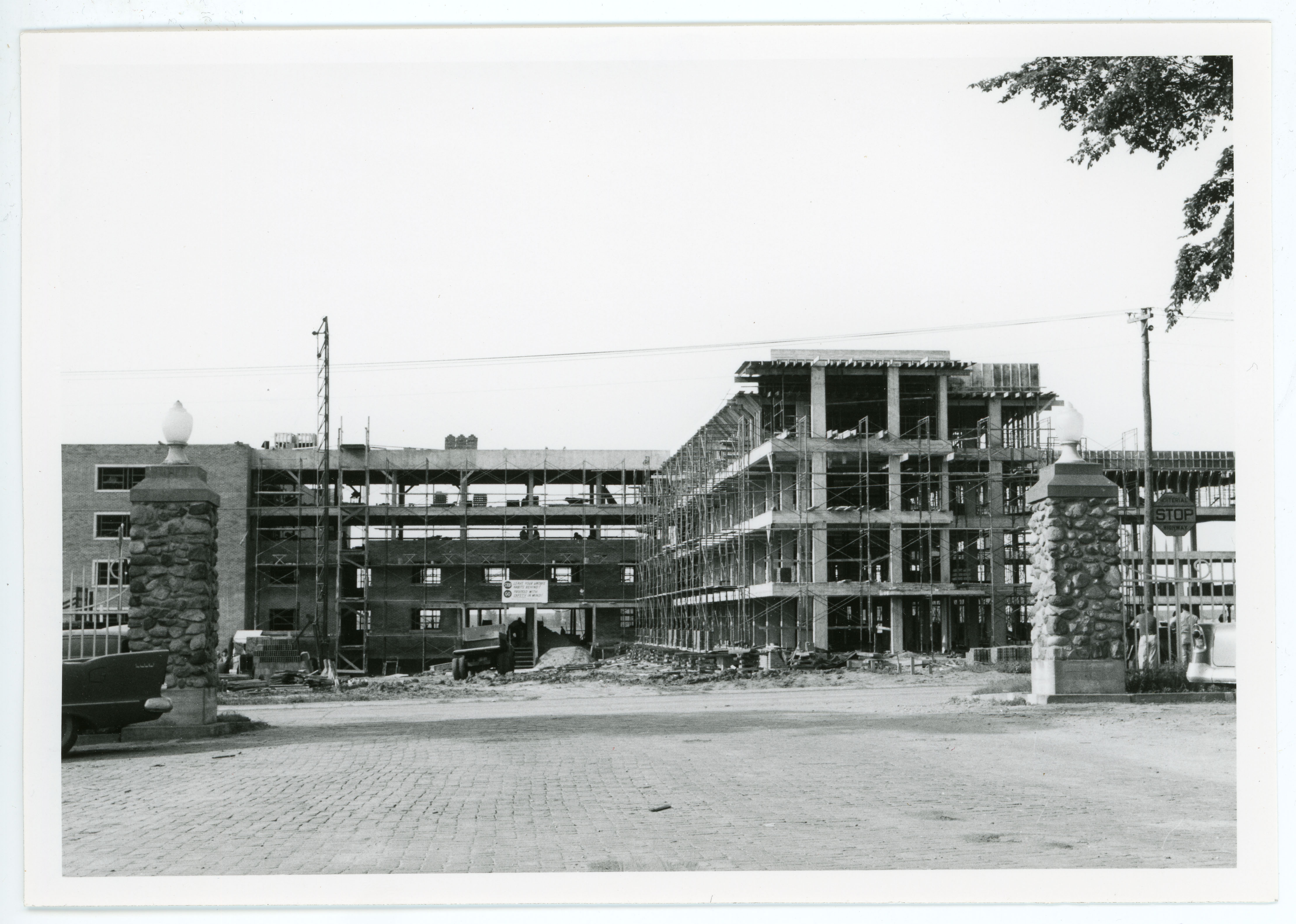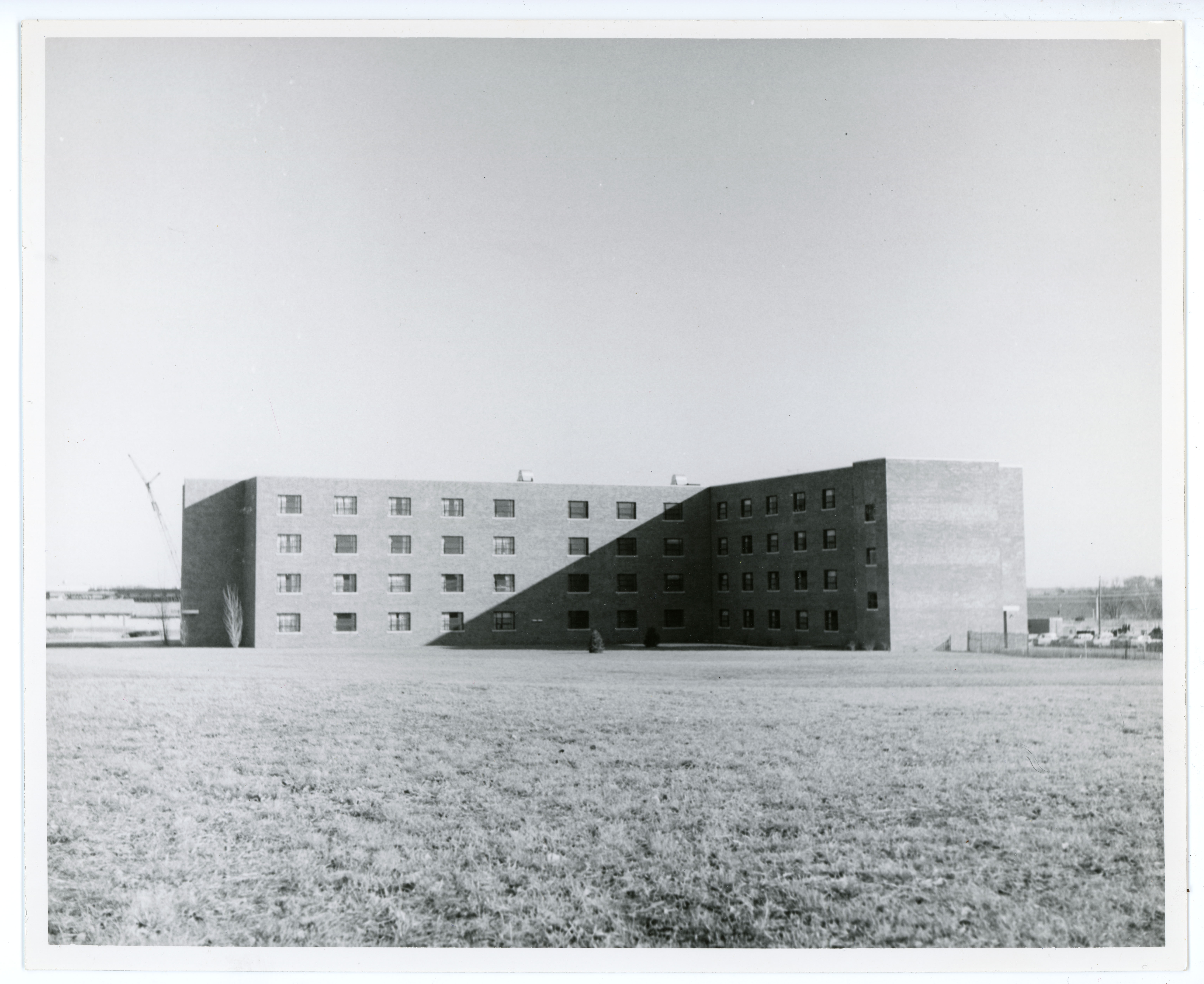Regents Complex (1960)
During the late 1940s and early 1950s, Iowa State Teachers College (now the University of Northern Iowa) officials tried to meet the demand for housing from both traditional students and those who were returning from military service. Additions to Lawther Hall and Baker Hall, the renovation of the O. R. Latham Stadium mezzanine level into Stadium Hall, and the new construction of Campbell Hall were made in an attempt to address housing needs for traditional students. The construction of Sunset Village and College Courts helped married students to find a campus home. However, by the late 1950s, school officials knew they had to prepare for the upcoming surge in enrollment caused by the Baby Boom generation. In particular, they wanted to build more dormitory facilities for male students.
Rider, Shull, Hagemann, and Noehren Halls
Redeker Center
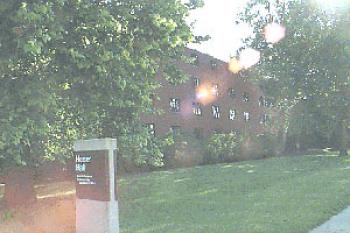
During the late 1940s and early 1950s, officials of the Iowa State Teachers College (now the University of Northern Iowa) tried to meet the demand for housing from both traditional students and those who were returning from military service. Additions to Lawther Hall and Baker Hall, the renovation of the O. R. Latham Stadium mezzanine level into Stadium Hall, and the new construction of Campbell Hall met the needs of traditional college students. The construction of Sunset Village and College Courts helped married students to find a campus home. But by the late 1950s, school officials knew that they had to prepare for the upcoming surge in enrollment caused by the Baby Boom generation. In particular, they wanted to build more dormitory facilities for men students. Over the years the college had concentrated on developing facilities for women for at least two reasons. First, at a college devoted solely to the training of teachers, women students far outnumbered men students. And second, based on the moral values of the time, the college chose to be more protective of women than of men.
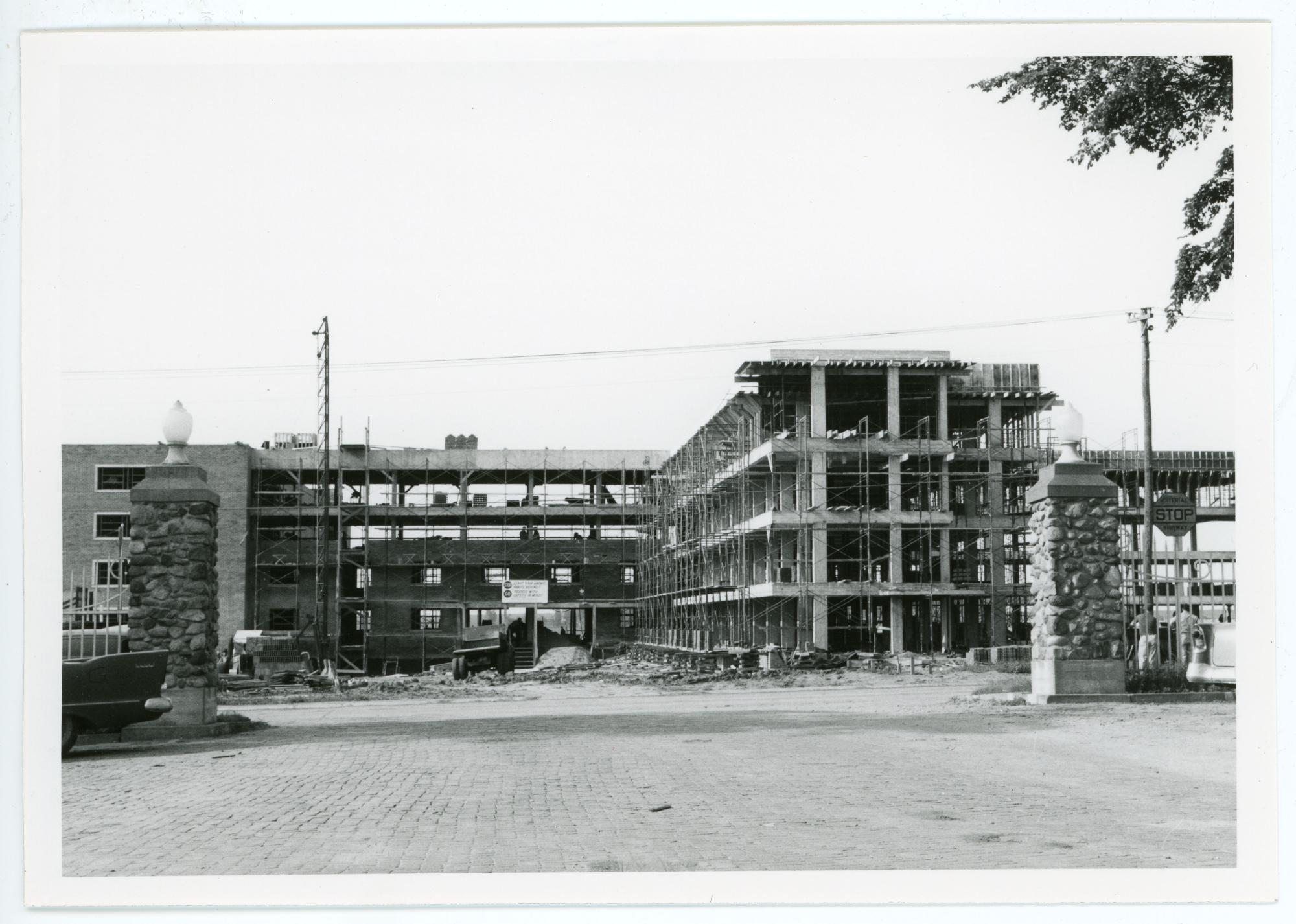
In 1957 Governor Loveless vetoed funds earmarked by the General Assembly for a new men's dormitory. But two years later, in the summer of 1959, Assistant to the President Daryl Pendergraft announced that dormitory funding had been approved. Initially the new facility would house only 150-200 men, but later additions would house as many as one thousand men. The tentative location would be the southwest part of campus. By the summer of 1960, plans had evolved and the structure was actually under construction by general contractor W. A. Klinger Company of Sioux City, Iowa. It was indeed located south of 27th Street near Prexy's Pond. But it was now projected to house four hundred students organized into eight fifty-man units. The budget of $1.3 million, which included both construction and equipment costs, was financed by bonding against future dormitory revenues. The college would save money on architectural design costs by following plans developed for Helser Hall, a dormitory on the Iowa State University campus. The completion date was set for August 1961.

By January 1961 the steel framework for the building was in place and equipment was being purchased. September 1, 1961, was the new target completion date. A utility tunnel from the old Power Plant and under 27th Street to the new dormitory was also under construction. For some months the new building, which would ultimately be called Rider Hall, was called simply the New Men's Dormitory. But in the summer of 1961, the Board of Regents formally named it Regents Hall for Men, to honor all who had served on the state board that governed the college. Reference Librarian Mary Dieterich is credited with suggesting the Regents name.

Regents Hall was not completed in time for the start of the fall semester of 1961. But by mid-September of that year, 175 men occupied the portion of the hall that was finished. An additional fifty men lived in a large open area in the basement of the hall. The College Eye, the student newspaper, awarded this latter group an honorary "medal for bravery beyond the call of duty" for paying full room and board charges and then having to live in such rough conditions. Baker Hall, then a dormitory, was jammed, as was Stadium Hall, or Stadium Hole, as it was less than affectionally known by some of its inhabitants at that time. By December 1961, the men of Stadium Hall moved into Regents Hall, and college officials refunded $4.44 apiece to the men who had been living in the crowded basement of Regents Hall.
On February 15, 1963, the Board of Regents approved a $3.4 million project budget for two new dormitories: one for women and the other for men. Each would house about four hundred students. The project would be financed again by bonding against future room and board fees. Brooks-Borg of Des Moines was selected as the project architect, but the new buildings would again be patterned after Helser Hall in Ames. The project would include kitchen and dining facilities, with construction scheduled to begin in the spring of 1963. The new buildings would be built near Regents Hall.

Additional plans emerged by April 1963, and the shape of the project that would eventually become the Regents Complex, with its four halls linked by dining facilities, became clearer. The next building to be built would be an additional men's dormitory. This would be followed by two units for women. The second men's dormitory was scheduled to be completed within a year or so, and the dining and lounge facilities would follow a year later. In an interesting example of the way in which the meaning of terms evolves over time, Dean of Students Paul Bender called this arrangement "co-educational living". Even though men and women would live in separate buildings, and share only dining and recreational facilities, Dean Bender seemed obliged to explain, both to on-campus and off-campus audiences, that this was not quite as daring a step as it might be perceived. He took pains to note that men and women had shared the Commons dining room for decades, though, of course, men had had to hike over to the Commons from Baker and Stadium Halls. It is interesting to note that the term "co-educational living" has taken on a much more liberal meaning in the forty years since Dean Bender made his statement.
In June 1963, the Regents approved a $1.264 million budget for Unit II (eventually known as Shull Hall) of the new dormitory complex. Henkel Construction Company of Mason City received the general contract for the building, which was intended to house 426 men. Construction costs would be $12.21 per square foot. Excavation for the building was underway by July 1963, with a completion date set for fall 1964.
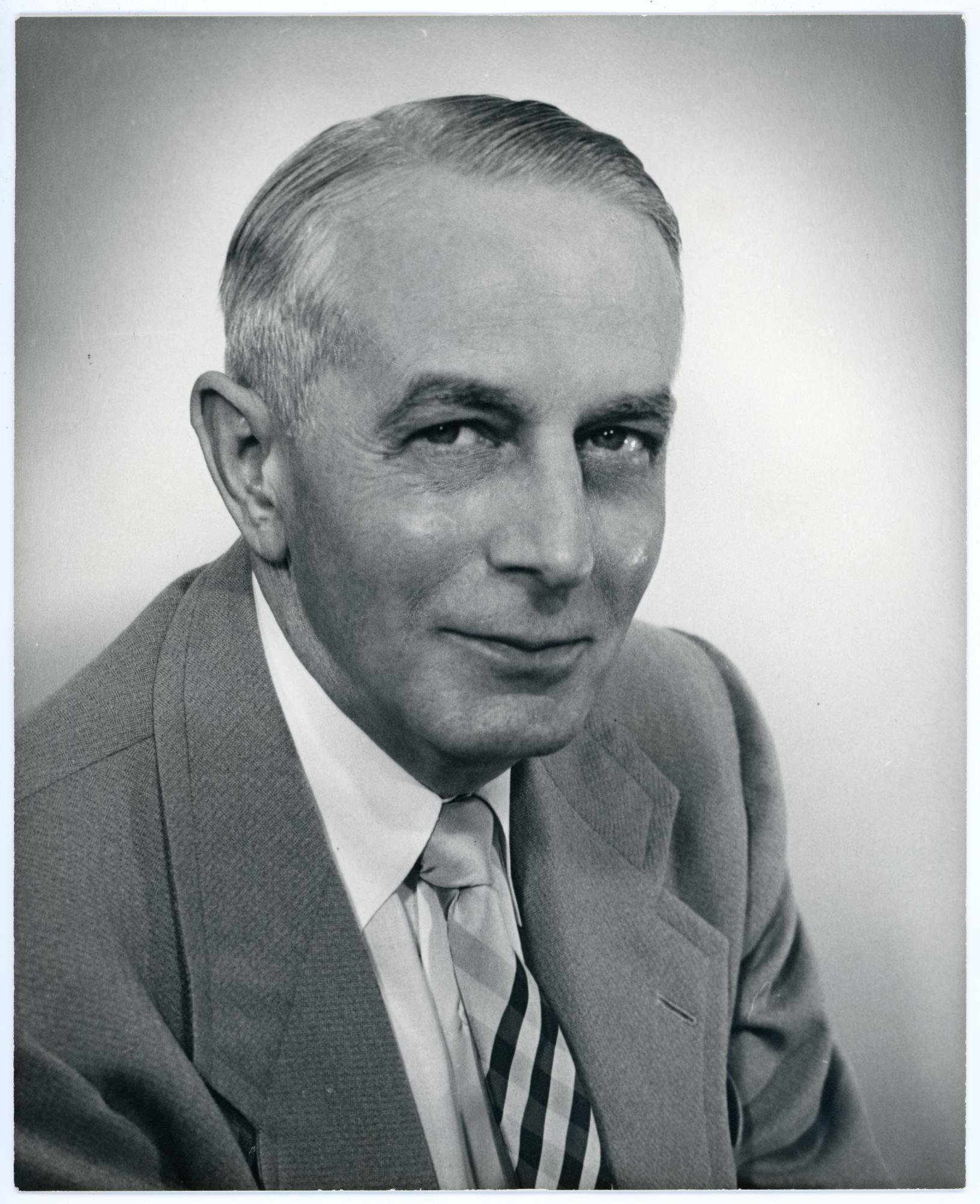
In December 1963, the Regents approved preliminary plans for Unit III (eventually known as Hagemann Hall) and for a dining facility. And, acting upon advice of a bonding consultant, the Regents also approved an increase in room and board fees to cover the cost of the dormitory bonds: yearly rates for room and board increased from $640 to $660. President Maucker hoped that overcrowding in the dormitories would be at least somewhat alleviated by 1966, when all four dormitories and the dining facilities, with a combined capacity of about 1200 students, would be completed.
By January 1964, exterior work on Unit II was nearly done and the foundation and floors had been laid in the south wing. With work and plans well under way for the developing complex of dormitory facilities, there was a need to think about names for the buildings. Shortly after the death of President Kennedy on November 22, 1963, one student suggested that Unit II be named in honor of the late President. But nothing seems to have come of that suggestion. In January the Association of Men's Residence Halls announced that it would conduct a vote on naming the first two of the Regents Complex halls. By that time it seemed that the complex as a whole would be known as the Regents Complex. But individual halls would carry the names of past presidents of the Board of Regents. The names of Dwight G. Rider and Henry C. Shull would appear on the ballot. The building known as Regents Hall would receive the name of the man who received the higher vote tally. Unit II, sometimes called the Regents Annex, would carry the name of the other man. Late in February 1964, President Maucker announced that Regents Hall would become Dwight G. Rider Hall and that Unit II would become Henry C. Shull Hall. Mr. Rider, a lawyer, served as president of the Board from 1951 though 1956.
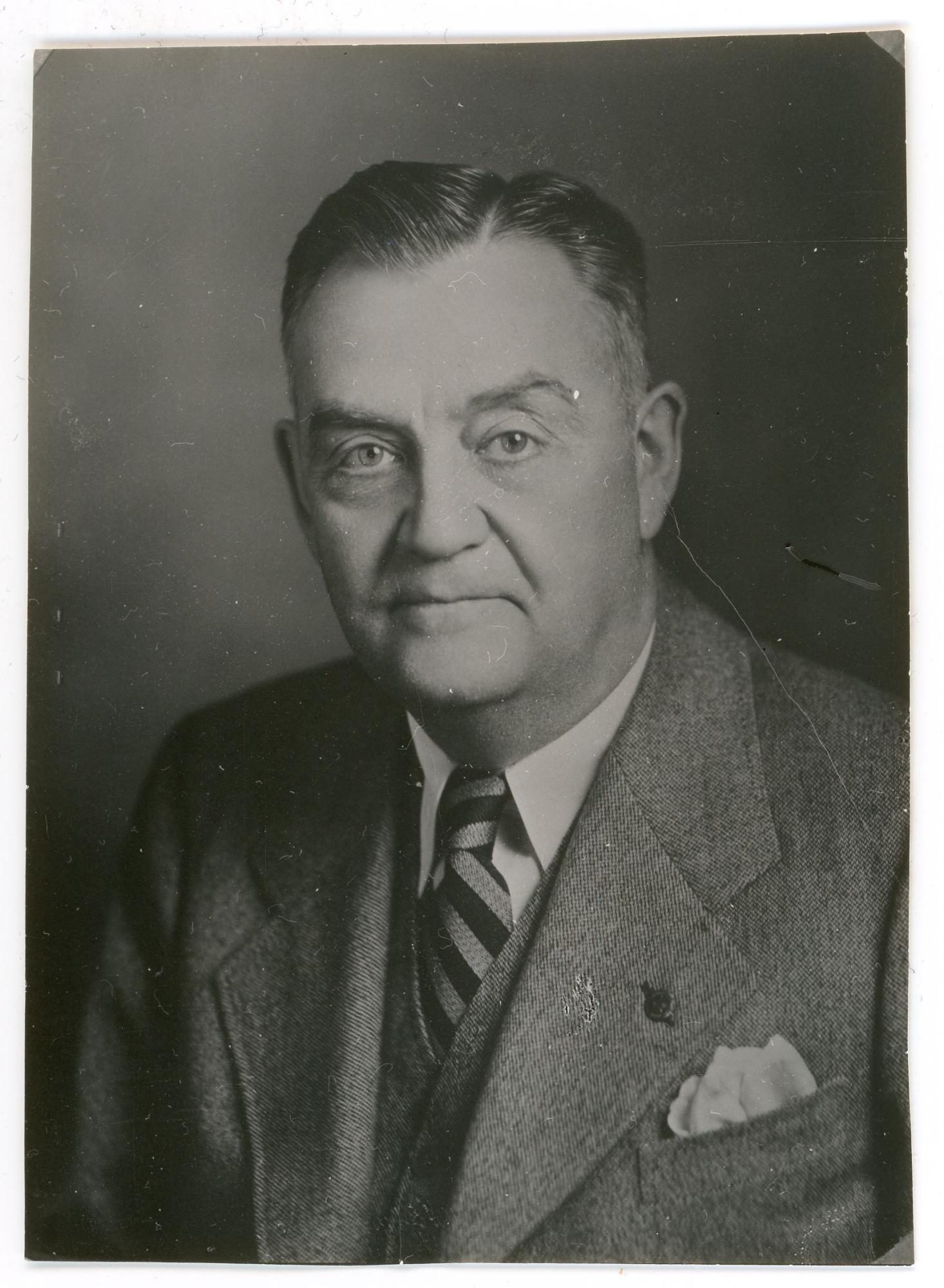
Mr. Shull, also a lawyer, headed the Board from 1940 through 1951. On May 24, 1964, the college held a dedication ceremony for Rider and Shull Halls. Both Mr. Rider and Mr. Shull attended the ceremony.
In April 1964 the Regents approved revenue bonds of $6.25 million to refinance and expand dormitory projects. The Board awarded contracts of over $2 million for the construction of Unit III and the dining facility of the Regents Complex. The John G. Miller Company of Waterloo was the general contractor. Plans called for construction to begin as early as May for the new dormitory, which was intended to house 414 women. The completion date was set for September 1965. Officials hoped that Unit II, Shull Hall, now meant to house 427 men, would be ready for fall 1964.
Construction on Unit III did get under way in May 1964. Work on both the hall and the dining facility moved along well. A number of women students looked forward to the completion of the new complex, even though it was located in what was then perceived to be a long way from the central campus. Student Jean Marker was quoted in the College Eye as saying, "So many of the buildings we use are getting old. We need some modern buildings to add sparkle." Others looked forward to being in closer proximity to men. One woman said, "On the other side of the campus, we never even see any guys."
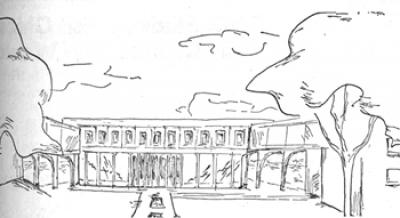
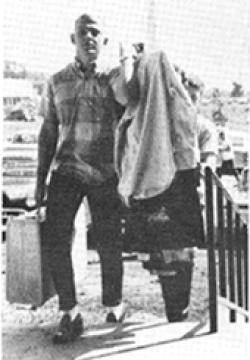
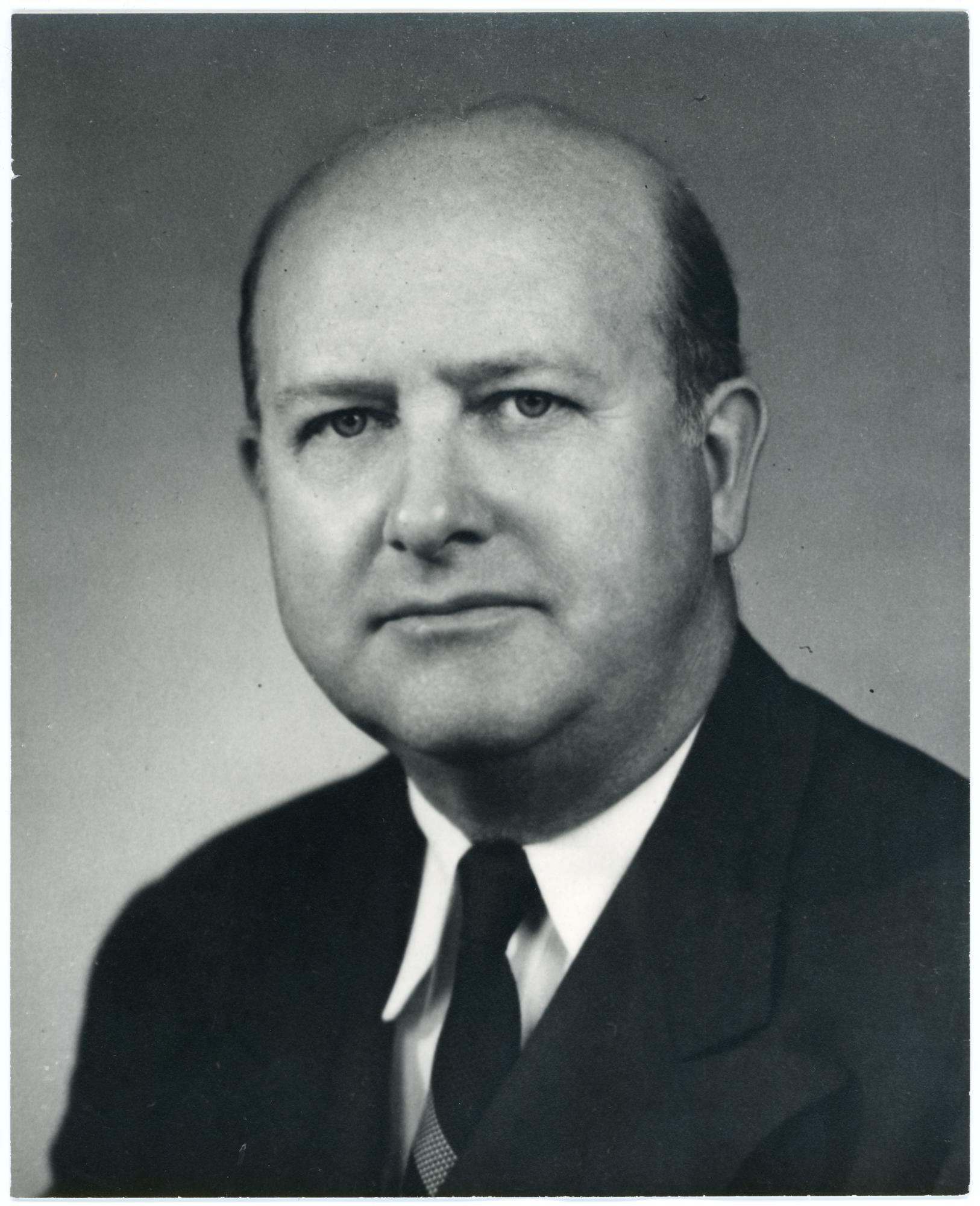
Shull Hall was indeed ready for men at the start of the fall 1964 semester, with almost five hundred residents moving in. There were plans at one time for two separate dining facilities: one for Rider and Unit III (Hagemann Hall) and a second for Shull Hall and the proposed Unit IV (Noehren Hall). Consequently, Shull Hall was initially not connected to the dining room by an enclosed walkway. But a common facility for all four halls seemed to be a better solution. In January 1965 the Regents approved a $3.05 million budget for the construction of Unit IV, a dormitory to house seven hundred women. The budget also provided for an addition to the dining facility, then under construction and planned for 1200 residents, to accommodate the now projected 1900 students who would live in the complex. The dining facility was known simply as the Regents Dining Hall.
In March 1965 the Regents approved the naming of Unit III to honor Henry H. Hagemann. Mr. Hagemann, a Waverly attorney, was president of the Board from 1957 through 1963. And Hagemann Hall opened on time for the fall 1965 semester. The building had five levels, four for residence and one for recreation and service. Each residence floor had a study lounge and two kitchenettes. The 204 double rooms had built-in wardrobes, sinks, and bookcases. The trundle style beds saved valuable floor space in the rooms. Hagemann Hall was dedicated October 10, 1965, during a campus open house that featured other new facilities including Regents Dining Hall, the Administration Building, and the Library.
The Jens Oleson Construction Company of Waterloo received the general contract for Unit IV, with a target completion date of January 1967. In February 1966, the Regents approved the naming of Unit IV in honor of Alfred W. Noehren, who served as president of the Board from 1963 through 1965.
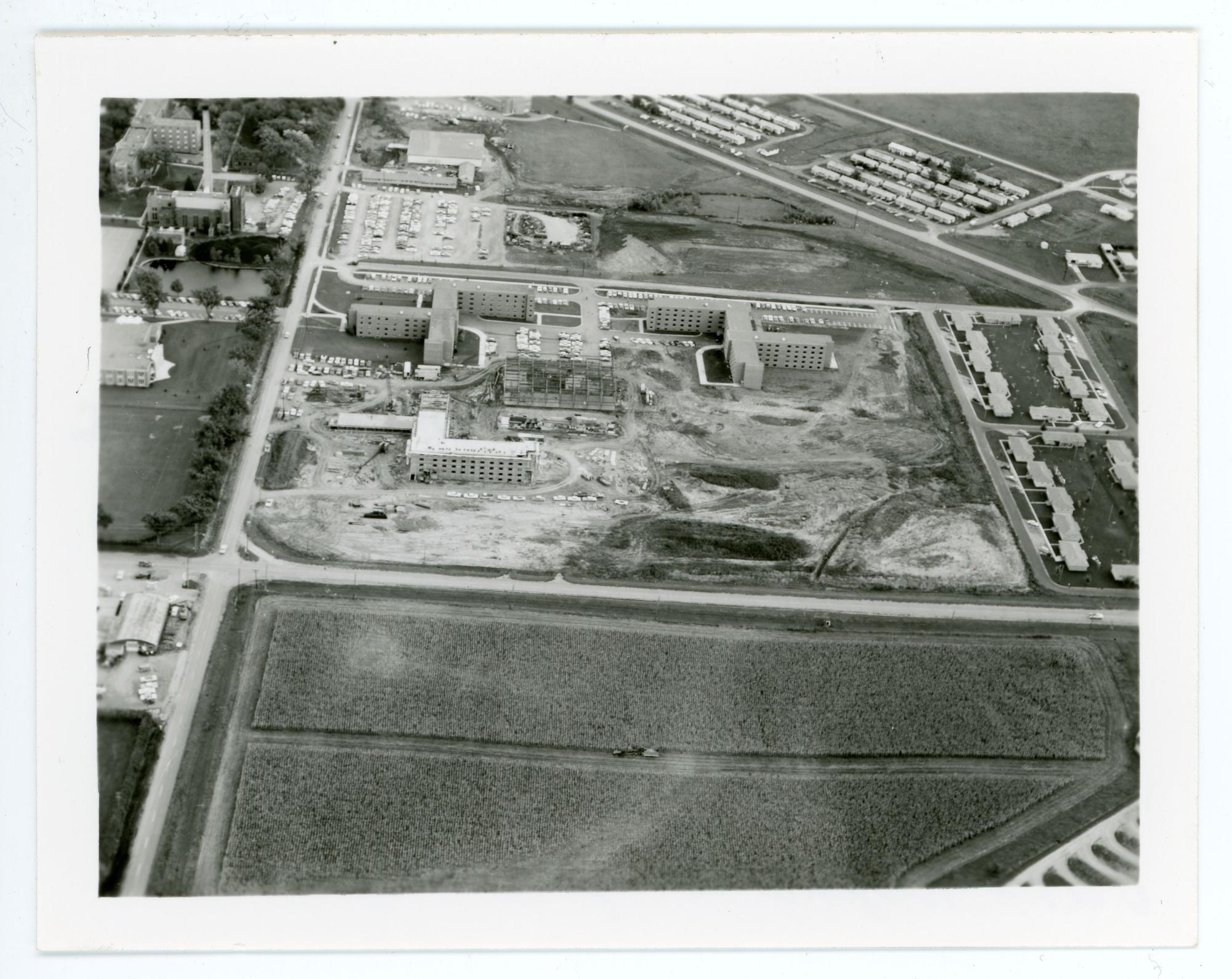
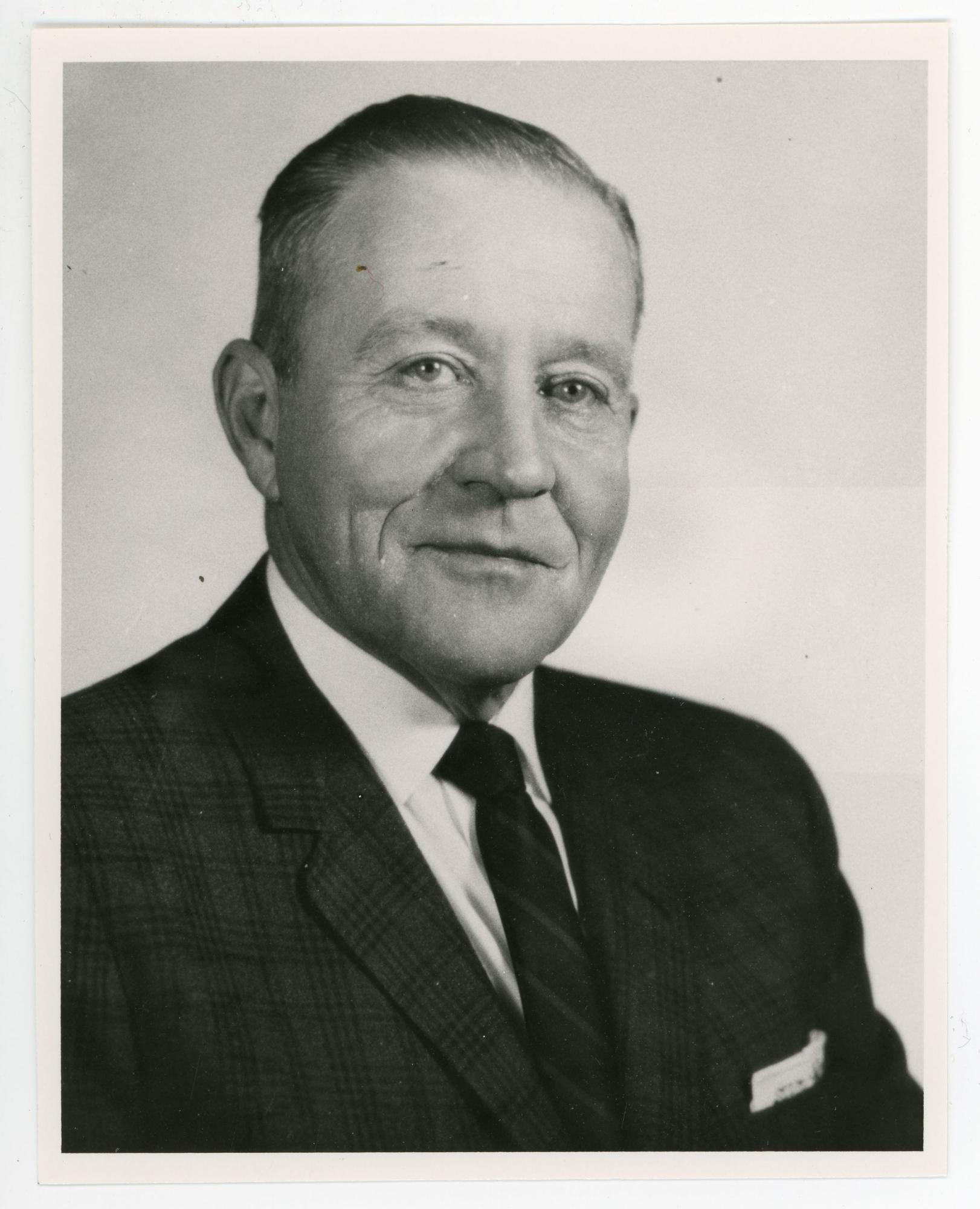
Officials hoped that at least two-thirds of Noehren Hall would be ready for occupancy by fall 1966.
In March 1966 College Eye feature writer Sherri Fuller took a long look at life in the Regents Complex. Both men and women seemed to enjoy the proximity of the other gender, even though, with Noehren Hall still under construction, men outnumbered women by a 2.5:1 ratio. There were the usual complaints about dorm food, though most seemed to like the open atmosphere of the dining room itself. And they enjoyed the lounges as places to read newspapers or magazines, to study, or to spend time with special friends. Over the summer of 1966, a time when women wore skirts or dresses to most meals, "modesty panels" were installed in the open railed stairs in the dining center.
And in September 1966 an additional ten telephone lines were installed in Hagemann Hall. However, even with this improvement, there was still just one telephone for every fifteen residents. Campbell Hall remained the only dormitory with telephones in each room.
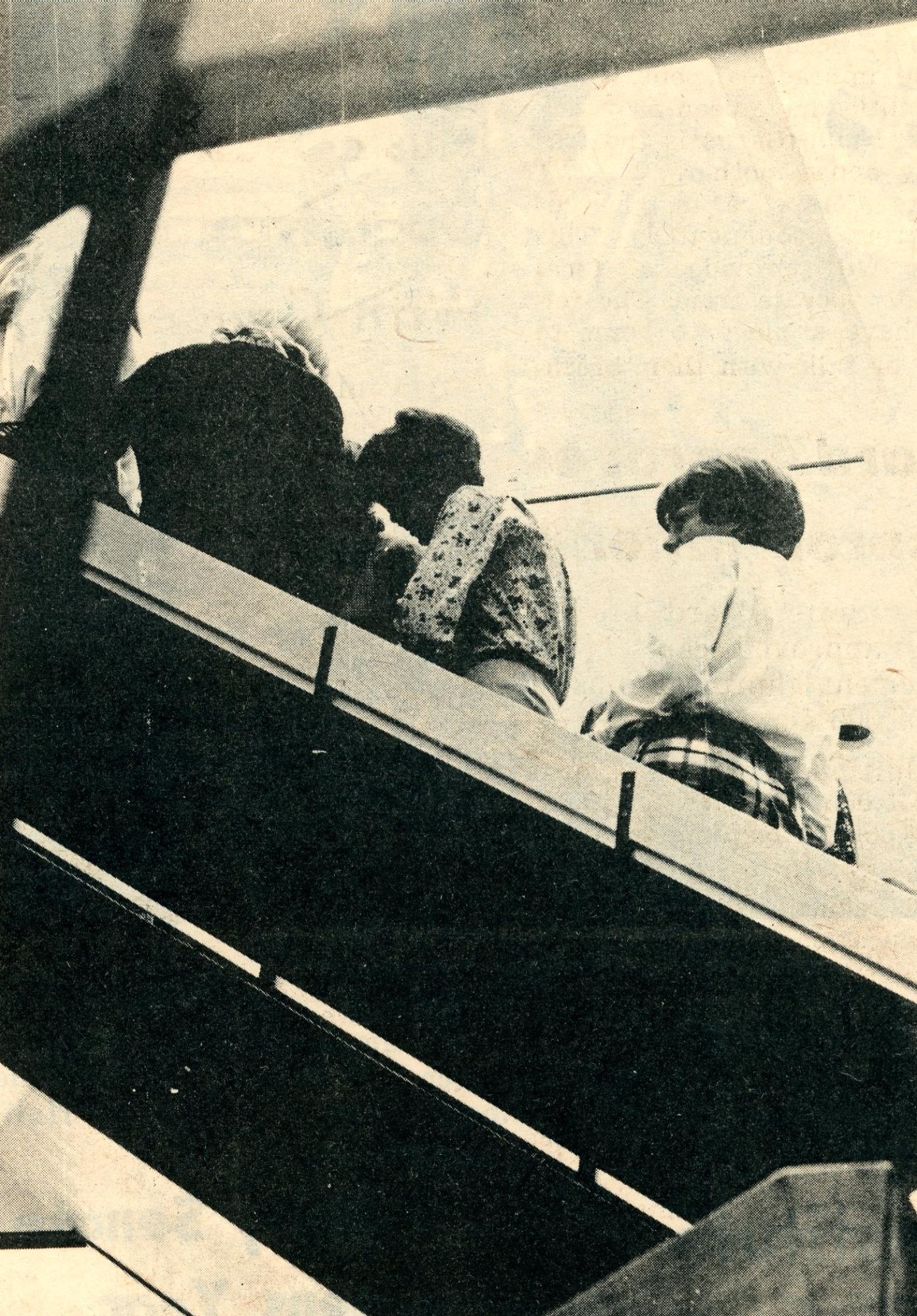
The matter of who would live in Noehren Hall remained unclear. It was designed for either men or women, or some combination in which the genders could be separated. Initial plans called for it to be used by women, and then, perhaps later, by men. By spring 1967 women occupied the part of Noehren Hall that had been completed, with the remainder of the building to be completed shortly. Noehren Hall was officially dedicated on October 1, 1967. At that time, 518 men and 206 women were housed in separate units of the hall.
The halls in the Regents Complex became involved in a number of activities and programs in their early years. In 1968, Clark House of Shull Hall had a house advisor, Delroy Johnson of the biology faculty, and a mascot, a rescued puppy adopted by Mr. Johnson. In 1970, the women of Hagemann Hall took part in traditional campus activities, such as Homecoming, Dad's Day, and Mother's Day, as well as service projects involving the elderly and needy families. In the fall of 1970, Noehren Hall tried a closed door visitation policy. During quite limited and specifically stated hours, women could entertain men in their rooms with their doors closed. The sign-in policy included the following rules:
- Guest shall sign in at the main desk
- Hostess shall sign her name
- Room number of guest and hostess is registered with the arrival time
- Token is picked up to hang outside the registered room
- Hostess sees male guest back to desk for sign-out
And indeed there were some tensions between men and women residents of Noehren Hall, with the use of certain facilities, such as the laundry room, limited to one gender at certain times.


But Regents Complex residents got together for some good times for activities such as the 1972 casino party that featured mock gambling and attracted a crowd of over one thousand. This event was so popular that it was repeated in later years.
When the Governor ordered the university to save energy by dropping thermostat settings to 68 degrees during the "Energy Crisis" of 1973, residents in parts of the Regents Complex, notably Noehren Hall, suffered. The zoned heating system apparently did not respond well to localized conditions. The Noehren Hall Director claimed that setting the thermostat at 68 degrees meant that temperatures dropped to 60 degrees in some parts of the building. Yet by the summer of that year, students were complaining about temperatures that reached 88 degrees in Noehren Hall.

In March 1974 the Board of Regents named the Regents Dining Center in honor of Stanley F. Redeker, a businessman from Boone, who had been president of the Board from 1965 through 1973. Mr. Redeker responded to the honor by saying " . . . it is great to be remembered after all the battles are over." The university held a formal dedication ceremony for Redeker Dining Center on October 20, 1974.
In April 1974, the coed housing arrangement in Noehren Hall, including a 24-hour visitation policy within the hall, was threatened. Vice President for Student Affairs Thomas Hansmeier, in a meeting with students, was reported to have said that the arrangement, with men and women living in the same building, would not continue because it had never been specifically authorized by the Board of Regents. Shortly afterward, however, Vice President Hansmeier reported that the administration had decided that the arrangement would continue for at least the 1974-1975 year. During that time, the policy would be evaluated and then reported to the Board for consideration. Rider Hall was selected for an experimental 24-hour visitation arrangement for the 1976-1977 and 1977-1978 years. Hagemann Hall residents voted to ask for a similar policy for 1978-1979. Most residents believed that these programs worked well.
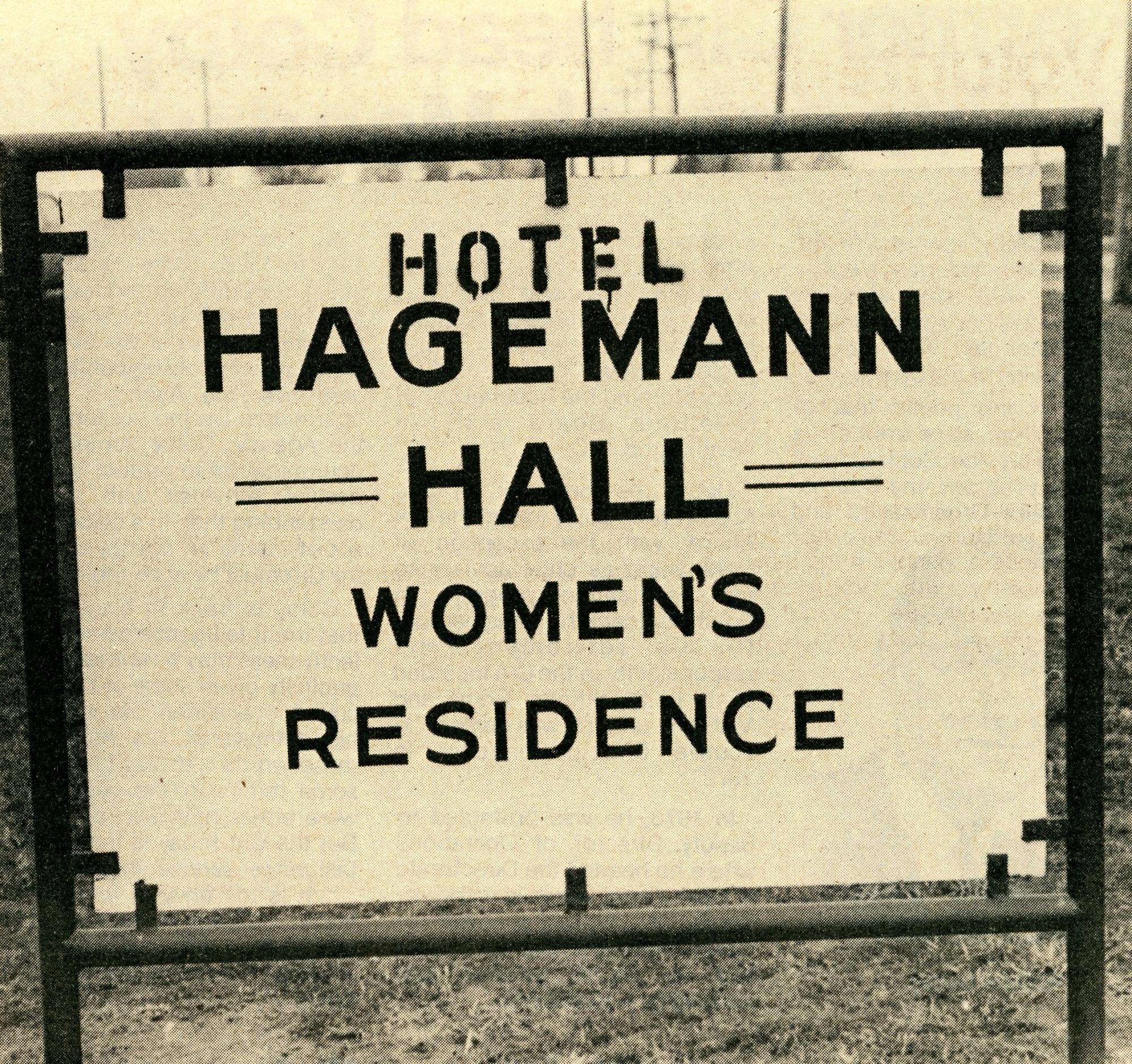
Some Regents Complex residents took part in the unfortunate campus Halloween tradition of food fights. Some years the food fights were relatively mild, with popcorn balls flying around the dining center. Other years they were much more destructive with potatoes, jello, carrots, and taffy apples, as well as dishes and glasses hurled at anyone who entered the room. The dining center ended up in a terrible mess. In a letter to the editor of the Northern Iowan, one bitter Regents Complex resident said, "Congratulations, all of you who helped to make Halloween supper such a success at Redeker. We, and all the clean-up committee are forever grateful. But next time, could you think of something more grown up?" But residents also had fun in much less destructive ways. For example, the Hagemann Hall annual Olympics included an egg toss, a scavenger hunt, and a picnic in 1975.
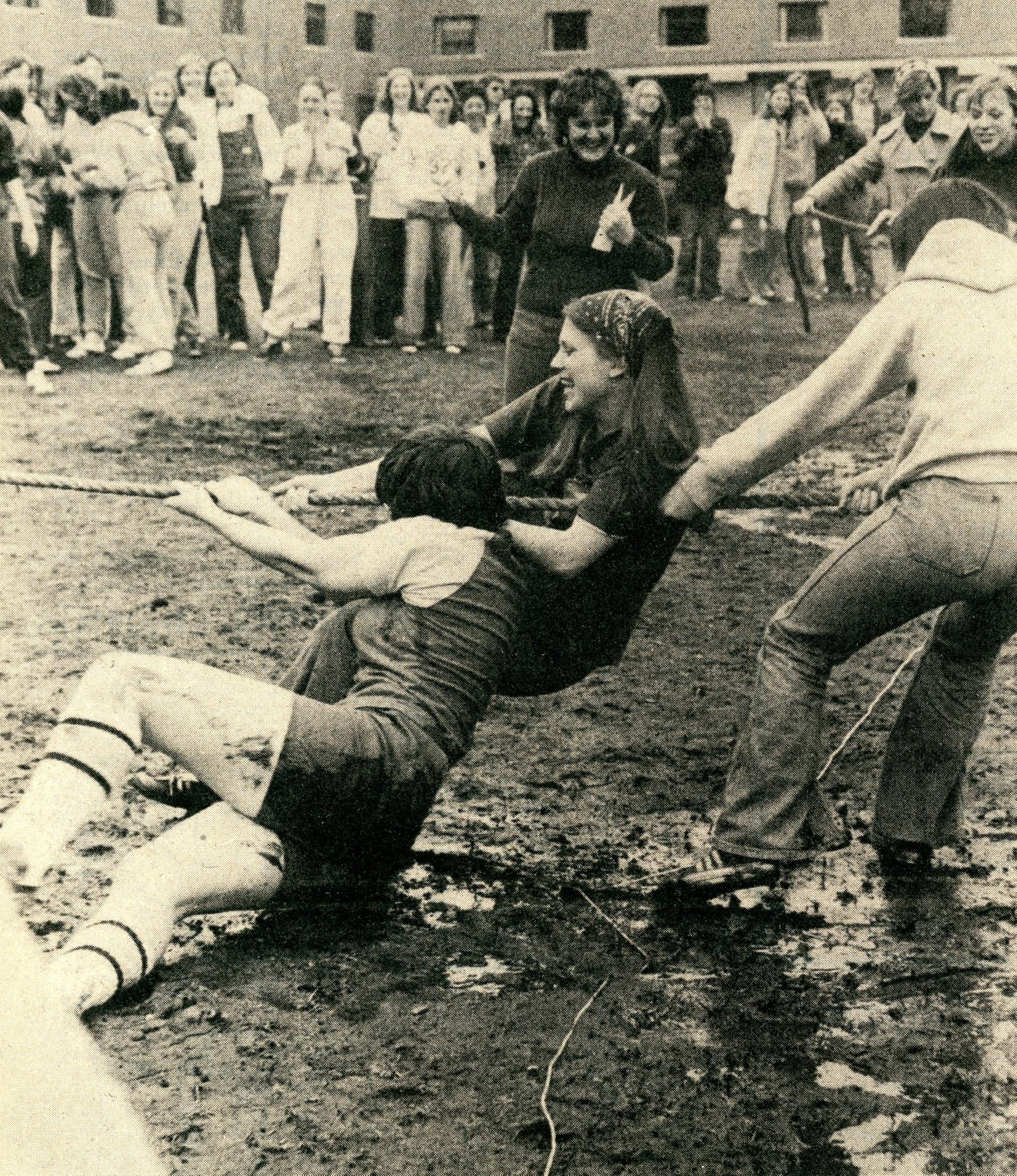
Redeker Center was also the site of some of UNI's Wine and Dine dinners. These events were opportunities for a relatively small group of invited students, staff, and faculty to get together for a pleasant dinner in a semi-formal atmosphere. There was good food, champagne or other wines, and maybe a brief lecture on the social graces associated with a fine dinner.
In the summer of 1977, large dividers were installed in the dining center to break up the "mess hall atmosphere" of the very large room, according to Dining Services Director John Zahari. Many students did not like the dividers.
In May 1980, the Board of Regents approved $61,000 to replace panels in the Regents Complex skyways with safety glass or insulated panels. And, following major fires in other residence halls and one small fire in Noehren Hall in 1981, officials initiated several programs to help residents avoid the risk of fire. Also in 1981 the Shull Hall Senate started the Shull Hall Escort Service to assist students who wished to be escorted safely from one part of campus to another. This service, which operated under several names, made a considerable contribution to safety on campus over the years. Rider Hall instituted a Night Patrol service at about the same time to patrol dark areas of campus.

A remodeling project for Redeker Center began during the spring semester of 1983. The catwalks, stairwells, and corridors were painted. The dining room was re-painted and re-carpeted, and moveable refrigerated food dispensing units were installed. In addition, several of the specialized rooms underwent renovation. A new cooling system, using well water rather than a cooling tower, was installed in the Center in 1985. And, despite a small fire that destroyed some construction materials, Shull Hall received a new roof in 1986. In 1987, the Regents approved a $175,000 project to renovate the Redeker Center Plaza. The project would involve new steps, curbs, drainage, sodding, and landscaping.
The installation of a computer laboratory in Redeker Center proved so popular with residents that in the spring semester of 1992 the lab was available twenty-four hours a day. Likewise, students appreciated the small convenience store operated by the Noehren Hall Senate.
Shull Hall, which had housed only men, went co-ed for the 1996-1997 school year. This reflected a stronger demand for women's housing and a weaker demand for men's housing. Each of Shull Hall's four floors would have a men's house and a women's house. Most students liked the change. One male resident commented, "It has a nicer appearance and smells better with girls around." In another lifestyle change, Noehren and Hagemann Halls went smoke-free in the fall of 1997. And in 1998 Redeker Center offered Della Suprema, a service, open until 10PM, in which students could prepare their own pizza.
In the summer of 1999, Rider Hall windows were replaced. Hagemann Hall windows were replaced in the summer of 2000. And in the fall of 1999, Rider Hall designated "substance-free floors" on which residents agreed to abstain from illegal drugs, alcohol, and tobacco. In celebration of its last year as an all-male hall, the men of Rider Hall dedicated themselves to community service. In the fall of 1999 the men donated $738 to Cedar Valley Hospice.

The Redeker Dining Center closed for extensive renovation for the 2000-2001 school year. Small dining centers, Baggins and Henry's, were established in the basements of Hagemann and Shull Halls. Students could also use the other campus dining centers during the renovation. Director of the Department of Residence Robert Hartman said that the renovated facilities would be worth the temporary inconvenience. The Center would offer more food choices and greater freshness. There would be computer connections as well as lighting and audio technology to allow for small performances. Mr. Hartman said, "The new Redeker experience will be very different from anything currently available on campus." The $8.3 million project was funded by student room and board charges. As the project neared completion, the Department of Residence offered tours of the facility. The renovated center held a grand opening for the Redeker Center Piazza in September 2001. The project won an award for architectural and design excellence from American School and University magazine. The work was designed by Lotti Krishan & Short of Tulsa, Oklahoma, in conjunction with Rietz Consultants of Ames. The Baker Group of Grand Rapids, Michigan, was the food service consultant.
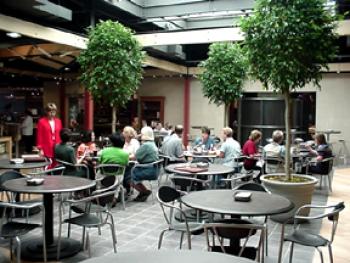
Shull Hall was closed for the 2004-2005 school year for improvements and renovation. Shull Hall, which was initially designed almost completely with double occupancy rooms, was remodeled into single occupancy rooms. Director of Residence Michael Hager cited a high demand for single rooms, despite the $1000+ room and board rate premium charged for such rooms. The cost for the renovation project was about $1.95 million. The renovation included installation of energy efficient windows and more home-like cabinets and sinks in each room, as well as improvements in bathrooms. Following the renovation, there were forty-two showers for the 211 students in Shull Hall.
The top four floors of Bender and Dancer Halls, closed for 2003-2004, were re-opened to compensate for the Shull Hall closure. Those floors had been closed because of a decline in enrollment and the expansion of attractive off-campus housing. Shull Hall will return to double occupancy in the fall semester, 2012.
Compiled by University Archivist Gerald L. Peterson, with research assistance by Student Assistant Anthony Boggs; scanning by Library Assistant Gail Briddle, November 2003; last updated January 9, 2012 (GP); photos and citations updated by Graduate Assistant Eliza Mussmann March 29, 2023.
In the summer of 1959, Assistant to the President Daryl Pendergraft announced that funding for a new men’s dormitory had been approved. Initially the new facility would house only 150-200 men but later additions would house as many as 1,000 men. By the summer of 1960, plans had evolved and the structure was under construction by general contractor W. A. Klinger Company of Sioux City, Iowa. It was located south of 27th Street near Prexy's Pond. Adjustments continued to be made and soon the new facility was projected to house 400 students organized into eight 50-man units. The budget of $1.3 million, which included both construction and equipment costs, was financed by bonding against future dormitory revenues. The college would save money on architectural design costs by following plans developed for Helser Hall, a dormitory on the Iowa State University campus.
By January 1961, the steel framework for the building was in place and equipment was being purchased. A utility tunnel from the old Power Plant under 27th Street to the new dormitory was also under construction. For some months, the new building (which would ultimately be called Rider Hall) was called simply the New Men's Dormitory. By the summer of 1961, the Board of Regents had formally named it Regents Hall for Men, to honor all who had served on the state board that governed the college. Reference Librarian Mary Dieterich is credited with suggesting the name.
